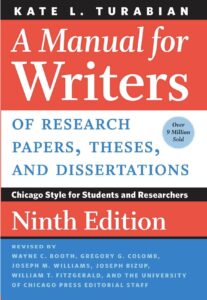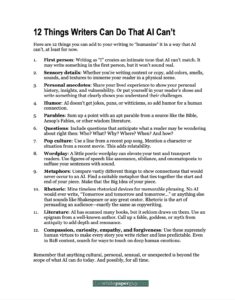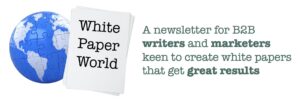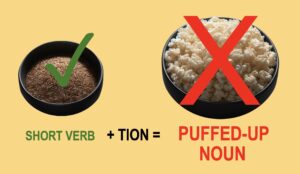White Paper World 26: July 27, 2023
- AI survey book giveaway: We have another winner!
- Quick tip: Do footnotes the Chicago way
- Checklist: 12 things writers can do that AI can’t
AI survey book giveaway: We have another winner!
Valicia Burke-France is a trained epidemiologist and healthcare educator with a PhD in biology who writes for medical and femtech companies.
Originally from the Virgin Islands, Valicia now lives in North Carolina.

Valicia Burke-France, medical and femtech writer
Valicia is also a former guardsman who was a first responder after two severe hurricanes hit the islands in 2017.
After freelancing on the side for several years, she went full-time in her own writing business in March 2023.
She’s always been interested in “using my skills to help people lead healthier and safer lives.”
To that end, Valicia has worked on many reports, journal articles, case studies, and white papers. With her excellent background and welcoming website, I expect great things from her.
A mixed score on the AI survey
Valicia scored 60% AI Pragmatist and 35% AI Enthusiast, with just a touch AI Resister.
You can still take the AI survey, get career advice, and win a book!
If you haven’t yet taken my 2-minute survey on AI, don’t delay.
Find out whether you’re an AI Enthusiast, AI Resister, or AI Pragmatist.
Every issue, I draw another winner who filled out the survey. There are still lots of books to win, including:
- signed copy of Ann Handley’s Everybody Writes, 2nd edition
- hardcover of Mike Stelzner‘s Writing White Papers
- signed copies of my White Papers For Dummies
Here’s where to take the AI survey… plus get some career advice on how to flourish in the era of AI.
To take the survey, click the graphic, or use this link: bit.ly/3Nc7wGX
Quick tip: Do footnotes the Chicago way
So you’re writing a white paper with lots of sources.
Way to go on doing your research!
Now you need footnotes (or endnotes) to cite those sources. But how do you format the pesky things?
Just stick in URLs and call it done?
Well, I’ve seen plenty of white papers that handle sources that way. But that’s really not ideal.
What if that URL changes or that page is taken down?
That happened to me recently: A source I found three weeks ago when I started a white paper had vanished overnight.
It’s better to give an expanded footnote that shows the full story on your source.
And for that, I use the Chicago Manual of Style Notes style, like this:
Author-first-name Author-last-name, “Title of article or book,” Publication-or-Publisher, Date, page (if needed), retrieved from URL-with-active-link
A quick example
Consider the story about a class action suit against Google:
https://www.usatoday.com/story/money/2023/06/13/google-settlement-search-payout/70318406007/
Here’s how that citation looks in the Chicago Notes format:
Kate Perez, “Google Search agrees to pay $23 million settlement and you may be entitled to a portion,” USAToday.com, last updated 16 June 2023, retrieved from https://www.usatoday.com/story/money/2023/06/13/google-settlement-search-payout/70318406007/
See how that gives your readers everything they need to know, in an easy-to-scan format?
And the active URL means they can check the original story with one click.
Where to find out more
For a quick reference to the Chicago Notes format, see this handy online guide. That page really covers all the basics, free.
To find out more, see the extremely useful book A Manual for Writers by Kate Turabian.
Beyond footnotes, this book covers planning, research, writer’s block, and much more.
It’s a steal for about $15 from Amazon.
I didn’t discover this in college like generations of other students before me. But it’s been a big help for me in writing white papers.
I don’t have any other book with so many sticky notes plastered all through it!
And a lot of those are in the chapter on how to format Notes.
Checklist: 12 things writers can do that AI can’t
Have you ever tried getting an AI to generate text for you?
Something longer than a headline or a social media post?
Something like a white paper?
How did it sound? A little… flat? Like it could use a whole lot more pizzazz?
To me, ChatGPT writes like an articulate but pedantic bore: It knows a lot, but it doesn’t know how to convey any of it with any personality.
When I ask the AI to liven things up, to include a joke or a parable, to use active voice, it doesn’t seem to know what I’m talking about.
I’ve realized that a good human writer can do many things that AI can’t. At least 12, in fact.
And here’s a free checklist you can grab to remind you of those tactics.
I think this might be the future of writing:
1. A client gets an AI to crank out a first draft or two. The AI does an okay job of researching and drafting the piece. Okay, but not inspired.
2. The client asks a seasoned human writer to check and polish the AI draft, to make it more interesting and relatable.
I call that humanizing AI text. Otherwise known as revising or editing. I’m ready to do that kind of work. Are you?
Click on the thumbnail or use this link to grab your free checklist: Checklist–12-Things-Human-Writers-Can-Do-That-AI-Cant
That’s all for this issue
If you’re on vacation soon, have a happy time!
I’m on vacation myself this month, but I’m still keeping these newsletters coming.
You can see all the previous issues of White Paper World here:
www.thatwhitepaperguy.com/newsletters/
And to see every future issue, make sure to subscribe here:
www.thatwhitepaperguy.com/subscribe/

Gordon Graham
That White Paper Guy
P.S. Remember to take the survey on AI for a chance to win a free book!








